Contents
- 1. User manual 1
- 2. User manual 2
User manual 2

Safety &
Warranty
Information
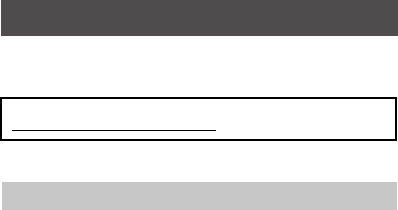
2 Important Safety Information
This section contains important operational and safety information that will help
you safely use your phone. Failure to read and follow the information provided in
this section may result in serious bodily injury, death, or property damage.
There are several simple guidelines to operating your phone properly and
maintaining safe, satisfactory service.
●To maximize performance, do not touch the portions of your phone where the
internal antennas are located while using the phone.
●Speak directly into the mouthpiece.
●Do not expose your phone to direct sunlight for extended periods of time
(such as on the dashboard of a car).
●Although your phone is quite sturdy, it is a complex piece of equipment and
can be broken. Avoid dropping, hitting, bending, or sitting on it.
●Any changes or modifications to your phone not expressly approved in this
document could void your warranty for this equipment and void your authority
to operate this equipment.
Note: For the best care of your phone, only Kyocera-authorized personnel
should service your phone and accessories. Failure to do so may be
dangerous and void your warranty.
Important Safety Information
Para la versión en español, visite nuestro sitio web en
www.kyoceramobile.com/support/phone/ y seleccione su teléfono.
General Precautions
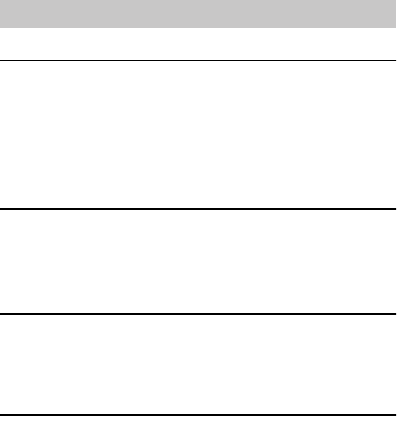
Important Safety Information 3
Do Not Rely on Your Phone for Emergency Calls
Mobile phones operate using radio signals, which cannot guarantee connection
in all conditions. Therefore you should never rely solely upon any mobile phone
for essential communication (e.g., medical emergencies). Emergency calls may
not be possible on all cellular networks or when certain network services or
mobile phone features are in use. Check with your local service provider for
details.
Using Your Phone While Driving
Talking on your phone while driving (or operating the phone without a hands-free
device) is prohibited in some jurisdictions. Laws vary as to specific restrictions.
Remember that safety always comes first.
Following Safety Guidelines
To operate your phone safely and efficiently, always follow any special
regulations in a given area. Turn your phone off in areas where use is forbidden
or when it may cause interference or danger.
Medical Devices
If you have a medical device, including an implantable medical device such as a
pacemaker or defibrillator, consult your healthcare provider and the device
manufacturer’s directions before using this mobile phone.
Persons with implantable medical devices:
●Should always keep the mobile phone more than six (6) inches from the
implantable medical device when the mobile phone is turned ON.
●Should not carry the mobile phone in the breast pocket.
●Should use the ear opposite the implantable medical device to minimize the
potential for interference.
●Should turn OFF the mobile phone immediately if you have any reason to
suspect that interference is taking place.
Maintaining Safe Use of and Access to Your Phone
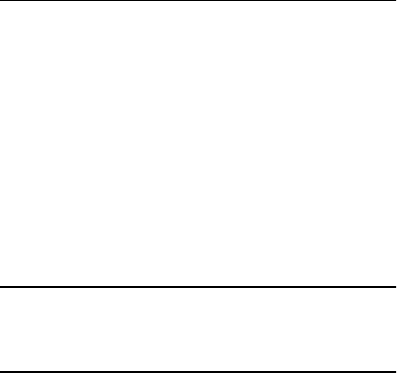
4 Important Safety Information
Using Your Phone Near Other Electronic Devices
Most modern electronic equipment is shielded from radio frequency (RF) signals.
However, RF signals from wireless phones may affect inadequately shielded
electronic equipment.
RF signals may affect improperly installed or inadequately shielded electronic
operating systems or entertainment systems in motor vehicles. Check with the
manufacturer or their representative to determine if these systems are adequately
shielded from external RF signals. Also check with the manufacturer regarding any
equipment that has been added to your vehicle.
Consult the manufacturer of any personal medical devices, such as pacemakers
and hearing aids, to determine if they are adequately shielded from external RF
signals.
Note: Always turn off the phone in healthcare facilities, and request permission
before using the phone near medical equipment.
Using Your Phone On Airplanes
On airplanes, follow applicable airline regulations and always follow the flight
crew’s instructions concerning the use of your phone.
Turning Off Your Phone in Dangerous Areas
To avoid interfering with blasting operations, turn your phone off when in a
blasting area or in other areas with signs indicating two-way radios should be
turned off. Construction crews often use remote-control RF devices to set off
explosives.
Turn your phone off when you’re in any area that has a potentially explosive
atmosphere. Although it’s rare, your phone and accessories could generate
sparks. Sparks can cause an explosion or fire, resulting in bodily injury or even
death. These areas are often, but not always, clearly marked. They include:
●Fueling areas such as gas stations.
●Below deck on boats.
●Fuel or chemical transfer or storage facilities.
●Areas where the air contains chemicals or particles such as grain, dust, or
metal powders.
●Any other area where you would normally be advised to turn off your vehicle’s
engine.

Important Safety Information 5
Note: Never transport or store flammable gas, flammable liquids, or explosives
in the compartment of your vehicle that contains your phone or
accessories.
Restricting Children’s Access to Your Phone
Your phone is not a toy. Do not allow children to play with it as they could hurt
themselves and others, damage the phone or make calls that may increase your
monthly bill.
Your Hydro REACH is waterproof and meets IPX5 and IPX7 standards, immersible
for up to 30 minutes at a depth not exceeding one meter (about 3.28 feet).
Exposing your phone to water outside these limits or not following the precautions
can result in water damage.
To ensure that your phone maintains waterproof capability, the following
precautions must be observed.
●Make sure the back cover is properly sealed by squeezing around the cover.
The charger/USB port and headset jack port do not have covers because they
are waterproof.
●Do not spray or immerse your phone in liquids other than fresh water or tap
water, such as detergent, beverages, or chlorinated or treated water. Certain
liquids such as salt water and chlorinated water are corrosive over time. Should
your phone be accidentally exposed to other liquids, rinse the phone gently in
clean fresh water.
●Do not expose your phone to water heated in excess of 104° F (40° C).
●Your phone is inoperable under water and should be dried as quickly as
possible when wet.
●Do not use the charger/USB port for charging, data transmission, etc. until the
phone is completely dry.
Waterproof Capability

6 Important Safety Information
If your phone gets wet:
Water lodged in the headset jack may cause the phone to falsely detect an
inserted headset (in which case the loudspeaker and/or earpiece audio will be
disabled) until the water is removed. Water in the microphone port may affect
outbound audio quality. These are temporary conditions and will subside once
the phone is dry.
1. Do not open the back cover as this may allow water to get inside the
sealed portion of the phone.
2. Wipe the phone surfaces with a dry clean cloth.
3. Water in the phone’s open ports may affect sound quality and should be
removed with puffs of air directly into the ports. Phone audio may not
operate properly until ports are dry. Apply a dry clean cloth to the open
areas and crevices to remove the moisture left on the phone:
microphones; speakers; power button; volume button; headset jack; and
charger/USB port.
4. Repeat the process until the phone is completely dry.
Charging
●Dry your phone with a clean cloth before charging.
●Do not touch the charger, charging cable, or charger/USB port with wet hands.
Doing so may cause electric shock, injury, or product failure.
●Do not charge your phone in a wet or damp place, such as in a bathroom or
near a kitchen sink.

Important Safety Information 7
When some wireless phones are used with certain hearing devices (including
hearing aids and cochlear implants), users may detect a noise which can
interfere with the effectiveness of the hearing device.
Some hearing devices are more immune than others to this interference noise,
and phones also vary in the amount of interference noise they may generate.
ANSI standard C63.19 was developed to provide a standardized means of
measuring both wireless phone and hearing devices to determine usability rating
categories for both.
Ratings have been developed for mobile phones to assist hearing device users in
finding phones that may be compatible with their hearing device. Not all phones
have been rated for compatibility with hearing devices. Phones that have been
rated have a label located on the box. Your Hydro REACH has an M4 and a T4
rating.
These ratings are not guarantees. Results will vary depending on the user’s
hearing device and the individual's type and degree of hearing loss. If a hearing
device is particularly vulnerable to interference noise; even a phone with a higher
rating may still cause unacceptable noise levels in the hearing device. Trying out
the phone with your hearing device is the best way to evaluate it for your
personal needs.
M-Ratings: Phones rated M3 or M4 meet FCC requirements for hearing aid
compatibility and are likely to generate less interference to hearing devices than
unrated phones. (M4 is the better/higher of the two ratings.)
T-Ratings: Phones rated T3 or T4 meet FCC requirements and are likely to be
more usable with a hearing device’s telecoil (“T Switch” or “Telephone Switch”)
than unrated phones. (T4 is the better/higher of the two ratings. Note that not all
hearing devices have telecoils in them.)
Note: This phone has been tested and rated for use with hearing aids for some
of the wireless technologies that it uses. However, there may be some newer
wireless technologies used in this phone that have not been tested yet for
use with hearing aids. It is important to try the different features of this
phone thoroughly and in different locations, using your hearing aid or
cochlear implant, to determine if you hear any interfering noise. Consult
your service provider or the manufacturer of this phone for information
on hearing aid compatibility. If you have questions about return or
exchange policies, consult your service provider or phone retailer.
Hearing aid devices may also be measured for immunity to interference noise
from wireless phones and should have ratings similar to phones. Ask your
Using Your Phone With a Hearing Aid Device
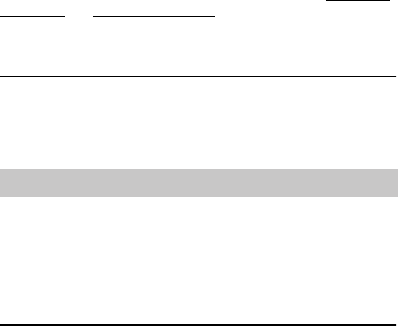
8 Important Safety Information
hearing healthcare professional for the rating of your hearing aid. Add the rating
of your hearing aid and your phone to determine probable usability:
●Any combined rating equal to or greater than six offers excellent use.
●Any combined rating equal to five is considered normal use.
●Any combined rating equal to four is considered usable.
Thus, if you pair an M3 hearing aid with an M3 phone, you will have a combined
rating of six for “excellent use.” This is synonymous for T ratings.
More information about hearing aid compatibility may be found at: www.fcc.gov,
www.fda.gov, and www.accesswireless.org.
Getting the Best Hearing Device Experience With Your
Phone
To further minimize interference, move the phone around to find the point with
least interference.
Note: The battery cannot be removed from the phone. For replacing or
disposing the battery, contact a KYOCERA authorized service
center.
Your Hydro REACH is installed with a lithium ion (Li-Ion) battery. The guidelines
listed below help you get the most out of your battery’s performance.
Charging
●Only use the battery with a qualified charger. Use of an unqualified battery
charger may present a risk of fire, explosion, leakage, or other hazard. If you
are unsure about whether a charger is qualified, contact customer support.
●In order to avoid damage, charge the battery only in temperatures that range
from 32° F to 113° F (0° C to 45° C).
●Don’t use the battery charger in direct sunlight or in high humidity areas,
such as the bathroom.
●The battery may need recharging if it has not been used for a long period of
time.
●It’s best to replace the battery when it no longer provides acceptable performance. It
can be recharged hundreds of times before it needs replacing. The battery cannot be
Caring for the Battery
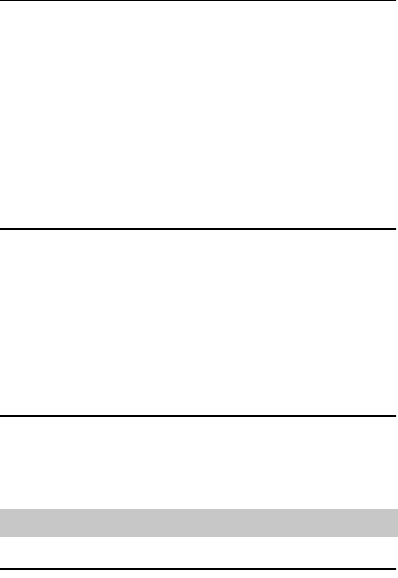
Important Safety Information 9
removed from the phone. Contact a KYOCERA authorized service center for
replacing the battery.
Common Causes of Battery Drain
●Playing games or using the Web.
●Keeping backlighting on.
●Operating the phone far away from a base station or cell site.
●Using data cables or accessories.
●Operating the phone when no service is available, or service is available
intermittently.
●High volume settings.
●Repeating sound, vibration, or lighted alerts.
Storing
●Don’t store the phone in high temperature areas for long periods of time. It’s
best to follow these storage rules:
▪Less than one month:
-4° F to 140° F (-20° C to 60° C)
▪More than one month:
-4° F to 113° F (-20° C to 45° C)
Disposal of Lithium Ion (Li-Ion) Battery Installed in Your
Phone
●The battery cannot be removed from the phone. For safe disposal options of
your Li-Ion battery, contact your nearest KYOCERA authorized service center.
Understanding How Your Phone Operates
Your phone is a radio transmitter and receiver. When it’s turned on, it receives
and transmits radio frequency (RF) signals. Your phone is designed to transmit
just enough RF power to reach the network. The system handling your call
controls the RF power level. Depending on network conditions, your phone may
Radio Frequency (RF) Energy

10 Important Safety Information
operate at an actual Specific Absorption Rates (SAR) level below the maximum
value specified. Your phone is designed not to exceed the recommended
international guidelines for limits on RF exposure.
Knowing Radio Frequency Safety
The design of your phone complies with updated NCRP standards described
below.
In 1991–92, the Institute of Electrical and Electronics Engineers (IEEE) and the
American National Standards Institute (ANSI) joined in updating ANSI’s 1982
standard for safety levels with respect to human exposure to RF signals. More
than 120 scientists, engineers and physicians from universities, government
health agencies and industries developed this updated standard after reviewing
the available body of research. In 1993, the Federal Communications
Commission (FCC) adopted this updated standard in a regulation. In August
1996, the FCC adopted hybrid standard consisting of the existing ANSI/IEEE
standard and the guidelines published by the National Council of Radiation
Protection and Measurements (NCRP).
Body-Worn Operation
To maintain compliance with FCC RF exposure guidelines, always use an
appropriate accessory if using the phone for body worn operations. Accessories
used with this phone for body worn operations must not contain any metallic
components and must provide at least 0.39 inches (1.0 centimeter) separation
distance between the user’s body and the phone, including antennas. Body worn
accessories that do not meet these requirements may not comply with FCC RF
exposure requirements and should be avoided.
For more information about RF exposure, visit the FCC website at www.fcc.gov.
Specific Absorption Rates (SAR) for Wireless Phones
The SAR value corresponds to the relative amount of RF energy absorbed into
the head of a user of a wireless handset.
The SAR value of a phone is the result of an extensive testing, measuring and
calculation process. It does not represent how much RF the phone emits. All
phone models are tested at their highest value in strict laboratory settings. But
when in operation, the SAR of a phone can be substantially less than the level
reported to the FCC. This is because of a variety of factors including its proximity
to a base station antenna, phone design and other factors. What is important to
remember is that each phone meets strict federal guidelines. Variations in SARs
do not represent a variation in safety.
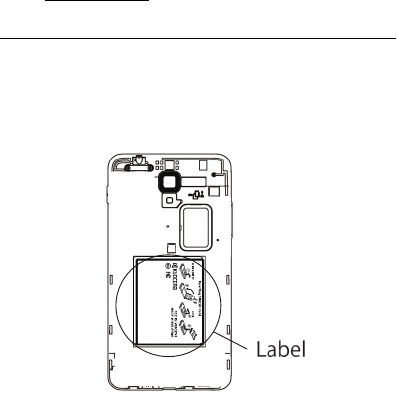
Important Safety Information 11
All phones must meet the federal standard, which incorporates a substantial
margin of safety. As stated above, variations in SAR values between different
model phones do not mean variations in safety. SAR values at or below the
federal standard of 1.6 W/kg are considered safe for use by the public.
The highest reported SAR values of the Hydro REACH are:
Head: 1.02 W/kg
Body-worn: 1.44 W/kg
Hotspot: 1.44 W/kg
Phone models may have different versions and more than one value. Changes in
design or components may occur over time and some changes could affect SAR
values. More information on the phone’s SAR can be found on the following FCC
website: http://fcc.gov/oet/ea/.
FCC Radio Frequency Emission
This phone meets the FCC Radio Frequency Emission Guidelines.
FCC ID number: V65C6743
The FCC ID number can be found printed on the label under the back cover. To
find the FCC ID number, remove the back cover.
You can also find the FCC ID number through the Settings menu. From the Home
screen, tap Apps > Settings > About phone > Compliance information. The
FCC ID number is displayed on the screen.

12 Important Safety Information
FCC Notice
This device complies with Part 15 of the FCC Rules. Operation is subject to the
following two conditions: (1) this device may not cause harmful interference, and
(2) this device must accept any interference received, including interference that
may cause undesired operation.
Changes or modifications not expressly approved by the party responsible for
compliance could void the user’s authority to operate the equipment.
Note: This equipment has been tested and found to comply with the limits for a
Class B digital device, pursuant to Part 15 of the FCC Rules.
These limits are designed to provide reasonable protection against harmful
interference in a residential installation. This equipment generates, uses and can
radiate radio frequency energy and, if not installed and used in accordance with
the instructions, may cause harmful interference to radio communications.
However, there is no guarantee that interference will not occur in a particular
installation.
If this equipment does cause harmful interference to radio or television
reception, which can be determined by turning the equipment off and on, the
user is encouraged to try to correct the interference by one or more of the
following measures:
●Reorient the direction of the internal antennas.
●Increase the separation between the equipment and receiver.
●Connect the equipment into an outlet on a circuit different from that to which
the receiver is connected.
●Consult the dealer or an experienced radio/TV technician for help.
The model number, regulatory number, and serial number are located on the
label under the back cover. Record the serial number in the space provided
below. This will be helpful if you need to contact us about your phone in the
future.
Model: Hydro REACH (C6743)
Serial No.:
Owner’s Record
Important: Carefully read our End User License Agreement at our website
www.kyoceramobile.com/support/phone/ before using or otherwise
accessing the software or services provided with your Kyocera device.

Manufacturer’s Warranty 13
Kyocera Communications, Inc. (“KYOCERA”) offers you, the original purchaser
who has purchased the enclosed subscriber unit (“Product”) only from an
authorized dealer in the United States, a limited warranty that the Product,
including accessories in the Product’s package, will be free from defects in
material or workmanship as follows:
A. ONE (1) YEAR LIMITED WARRANTY: For a period of one (1) year from the
date of original purchase, KYOCERA will, at its option, either repair or replace a
defective Product (with new or rebuilt parts/replacements).
B. LIMITED WARRANTY ON REPAIRED/REPLACED PRODUCTS: For a period
equal to the remainder of the limited warranty period on the original Product or,
on warranty repairs which have been effected on Products for 90 days after the
date of its repair or replacement, whichever is longer, KYOCERA will repair or
replace (with new or rebuilt parts/replacements) defective parts or Products used
in the repair or replacement of the original Product under the Limited Warranty
on it.
Proof that the Product is within the warranty period in the form of a bill of sale or
warranty repair document that includes the date of purchase, Product serial
number and the authorized dealer’s name and address, must be presented to
obtain warranty service. This limited warranty is not transferable to any third
party, including but not limited to any subsequent purchaser or owner of the
Product.
Transfer or resale of a Product will automatically terminate warranty coverage
with respect to it.
This limited warranty covers batteries only if battery capacity falls below 80% of
rated capacity or the battery leaks. Also this limited warranty does not cover any
battery if (i) the battery has been charged by a battery charger not specified or
approved by KYOCERA for charging the battery, (ii) any of the seals on the
battery are broken or show evidence of tampering, or (iii) the battery has been
used in equipment other than the Kyocera device for which it is specified.
This limited warranty covers the Product only as originally supplied and does not
cover and is void with respect to the following: (i) Products which have been
improperly installed, repaired, maintained or modified (including the antenna); (ii)
Products which have been subjected to misuse (including Products used in
conjunction with hardware electrically or mechanically incompatible or Products
used with software, accessories, goods or ancillary or peripheral equipment not
supplied or expressly authorized by KYOCERA for use), abuse, accident, physical
damage, abnormal use or operation, improper handling or storage, neglect,
exposure to fire, water (except for product certified for protection against water;
see the Kyocera product website for details on your Product) or excessive
moisture or dampness or extreme changes in climate or temperature; (iii)
Manufacturer’s Warranty
14 Manufacturer’s Warranty
Products operated outside published maximum ratings; (iv) cosmetic damage; (v)
Products on which warranty stickers or Product serial numbers have been
removed, altered, or rendered illegible; (vi) customer instruction; (vii) cost of
installation, set up, removal or reinstallation; (viii) signal reception problems
(unless caused by defect in material or workmanship); (ix) damage the result of
fire, flood, acts of God or other acts which are not the fault of KYOCERA and
which the Product is not specified to tolerate, including damage caused by
mishandling and blown fuses; (x) consumables (such as memory cards, fuses,
etc.); (xi) third party software or applications, data and equipment not originally
supplied with the Product; (xii) any Product in which the software has not been
updated to the current version; (xiii) any Product in which the operating system
has been unlocked (allowing installation of a third party operating system); or
(xiv) any Products which have been opened, repaired, modified or altered by
anyone other than KYOCERA or a KYOCERA authorized service center. Before
returning any Product for service, be sure to back up data and remove any
confidential, proprietary, or personal information from the Product. KYOCERA is
not responsible for damage to or loss of any software, applications, data or
removable storage media.
This warranty is valid only in the United States.
REPAIR OR REPLACEMENT, AS HEREIN ABOVE PROVIDED, IS YOUR SOLE
AND EXCLUSIVE REMEDY FOR BREACH OFTHE LIMITED WARRANTY.
KYOCERA SHALL HAVE NO LIABILITY FOR ANY INCIDENTAL OR
CONSEQUENTIAL DAMAGES, INCLUDING, BUT NOT LIMITED TO LOSS OF
PROFITS, LOST SALES, LOSS OF DATA, LOSS OF USE OFTHE PRODUCT, OR
ANTICIPATED PROFITS ARISING OUT OF USE OR INABILITYTO USE ANY
PRODUCT (FOR EXAMPLE, WASTED AIRTIME CHARGES DUE TO THE
MALFUNCTION OF A PRODUCT OR LOST APPLICATIONS). THIS WARRANTY
DOES NOT COVER PRODUCTS SOLD “AS IS” OR “WITH ALL FAULTS.”
KYOCERA MAKES NO OTHER EXPRESS WARRANTY WITH RESPECTTO THE
PRODUCTS. THE DURATION OF IMPLIED WARRANTIES, INCLUDING IMPLIED
WARRANTIES OF MERCHANTABILITY AND FITNESS FOR A PARTICULAR
PURPOSE IS LIMITED TO THE DURATION OFTHIS EXPRESS WARRANTY.
Some states do not allow the exclusion or limitation of incidental or
consequential damages, or allow limitations on how long an implied warranty
lasts, so the above limitations or exclusions may not apply to you. This limited
warranty gives you specific legal rights, and you may have other rights which
vary from state to state.
To obtain warranty service, contact Kyocera Communications, Inc.Attention :
Customer Services for Wireless Products
Phone : 1-800-349-4478
Web : http://www.kyocera-wireless.com
© 2016 Kyocera Corporation. All rights reserved. KYOCERA is a registered
trademark of Kyocera Corporation. All other trademarks are the property of their
respective owners.